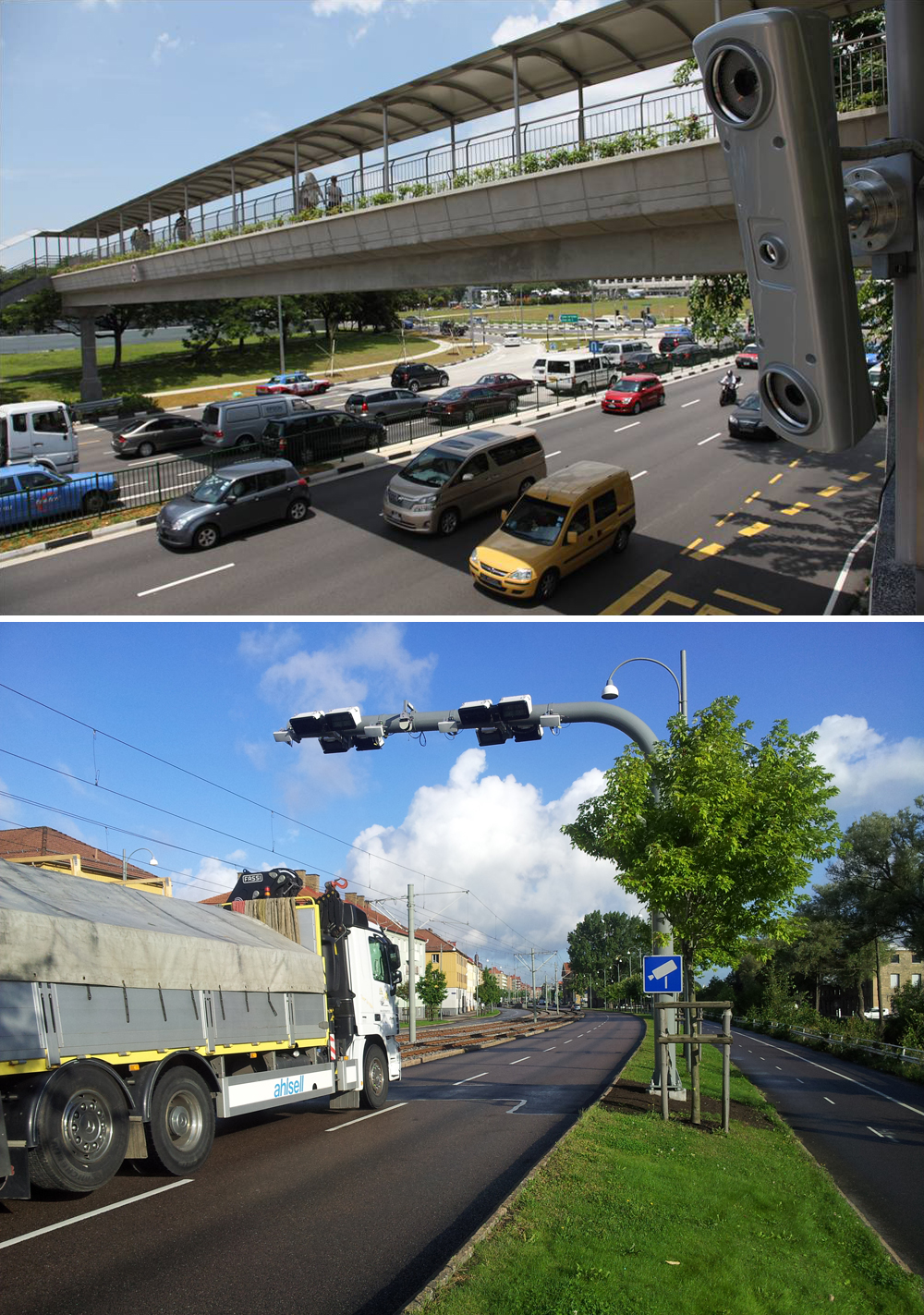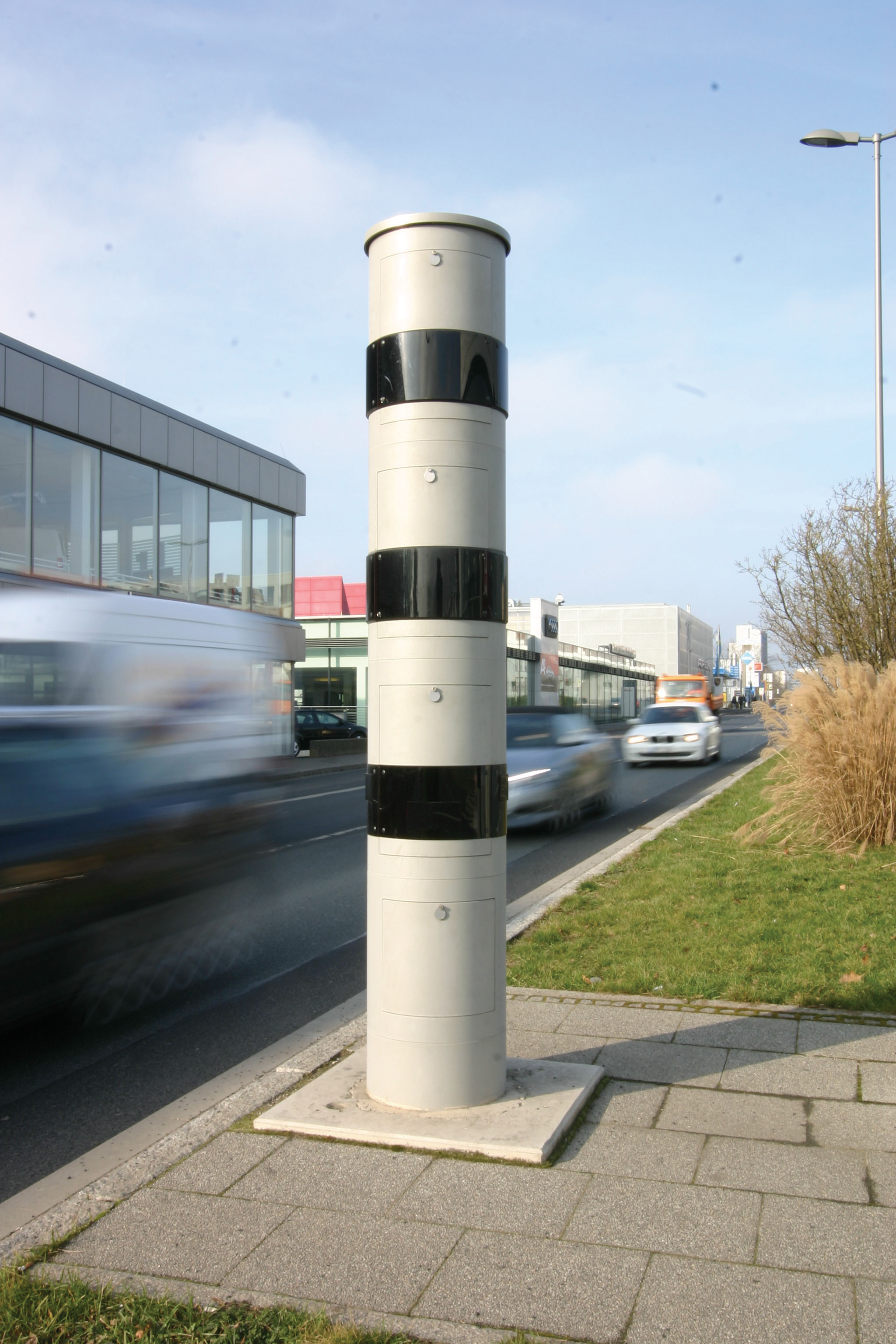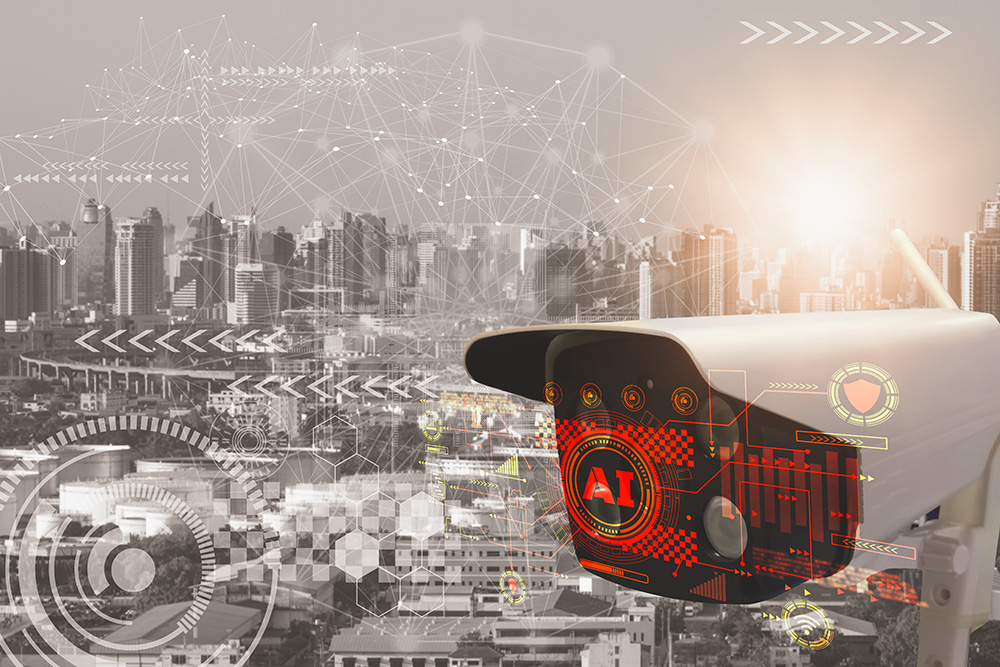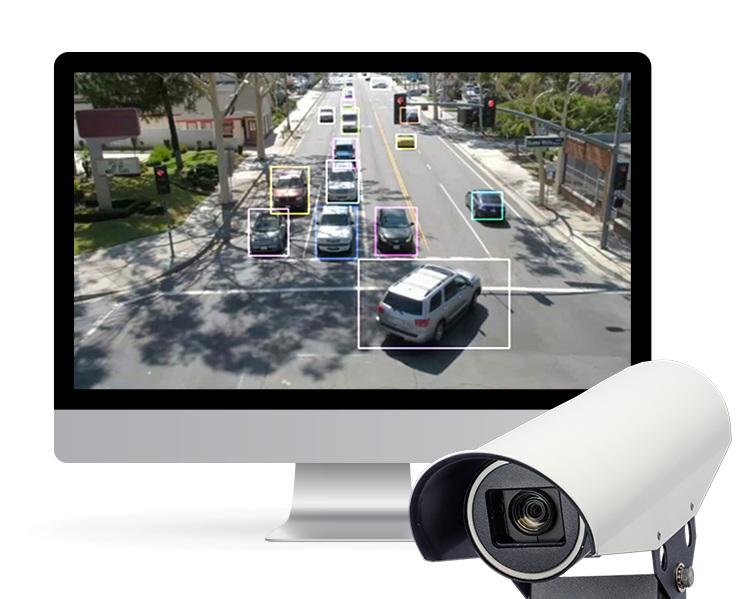Machine vision techniques hold the potential to solve a multitude of challenges facing the transportation sector
Optical Character Recognition (OCR), the base technology for number plate recognition, has been in industrial use for more than three decades. It is a prime example of how, instead of having to start from scratch, the transportation sector can leverage and adapt the machine vision expertise already used in industry in order to provide robust solutions with new capabilities.
“The real val

TOP: Kria uses 3D stereo as the basis for its camera systems; BOTTOM: Q-Free uses machine vision in its tolling systems like this one in Gothenburg
Machine vision techniques hold the potential to solve a multitude of challenges facing the transportation sector
Optical Character Recognition (OCR), the base technology for number plate recognition, has been in industrial use for more than three decades. It is a prime example of how, instead of having to start from scratch, the transportation sector can leverage and adapt the machine vision expertise already used in industry in order to provide robust solutions with new capabilities.
“The real value is being able to leverage vision processing techniques to solve specific traffic problems. Object detection and classification is another proven machine vision technology that has been tailored for transportation and shows tremendous cross-functional value,” states Dany Longval, vice president of worldwide sales at long-time EMVA-member7311 Lumenera Corporation.
The initial challenges of working in varying lighting and temperature conditions have now been overcome for most applications and the high resolution and speeds of today’s imaging technology allows a moving licence plate to be read and hazards along a path to be identified with great accuracy. That information, gathered in real time, is then available to inform decisions (automated or otherwise) about adjusting the timing of traffic lights to optimise traffic flow or dispatch emergency vehicles.
Machine vision technologies cover a wide variety of tools from 2D grey level imaging via colour detection to 3D technologies for size classification, distance measurement and speed control and now there is hyperspectral imaging for object detection in almost all light conditions. By utilising these machine vision techniques in transport control systems, road operators can reduce congestion and increase utilisation of transportation infrastructure to benefit both the economy and the environment. Systems such as electronic tolling, which use vision technology to capture and read licence plates, allow for more efficient traffic flow compared to manually operated toll booths. Traffic flow management uses vision algorithms to measure speed and detect bottlenecks in real time and then to inform decisions on adjusting variable speed limits or rerouting traffic.
One interesting application already in use is the detection of heavy vehicles using emergency escape ramps on long downhill slopes when overheating is leading to the degradation and failure of the primary braking system. Cameras equipped with machine vision technology provide a simple, cost-effective and reliable mechanism to detect the presence of a vehicle using the ramp and relay the information to traffic further up the hill via variable message signs. Another very beneficial application already in use is the tread depth measurement of car and truck tyres while the vehicle is in movement. “This uses a 3D vision system which is integrated into the pavement allowing the vehicle to drive over the sensor at normal speed,” explains Gabriele Jansen, CEO of Vision Ventures. “Tread depth is automatically measured without any need to exactly position the tyre over the sensor.” The system is installed for instance at rental car stations to alert the operator in case the tyre condition needs attention.
Tunnel observation is an area where multispectral machine vision technology provides clear benefits: “The grey level imaging aspect serves for non-photorealistic rendering (NPR) as well as incident and speed detection, the infrared (IR) imaging part enhances visibility and serves for emissions control and gas detection,” says Jansen who is also member of the EMVA Board of Directors. Clearly machine vision does not replace control rooms or the staff manning them but it does provide a means to increase efficiency and a tool to enable the same number of operators to monitor more cameras while also speeding up incident or abnormality detection. Machine vision systems increase the level of automated decision-making and thus free control room staff from tiring repetitive tasks while at the same time enhancing reliability and repeatability of the processes.
Wrong way driving, another field application of machine vision technology in the ITS sector, moved from the lab into deployment some years ago with equipment being set up at egress points along a roadway. However, while the technology works reliably, it is difficult to scale up to network-wide deployments. “Newer solutions relying on vision technology implemented on existing CCTV feeds make deployments significantly easier as much of the infrastructure is already in place,” says Longval. Road worker safety is another area where demand is growing quickly. “In some of the most recent innovations, we have even seen vision technology being embedded right within the orange safety cones used to delineate construction work zones along the road,” says Longval.
Developments for safety zone monitoring is also ongoing in other areas than ITS, says Jansen, adding: “One of the next steps in automation is the integration of collaborating robots – that is robots working ‘hand in hand’ with human operators,” she explains. “Machine vision is one of several tools to ensure worker safety in these scenarios.” The key message is that if the transportation sector has an unanswered detection or monitoring problem, it may be that systems and algorithms have been developed in other industry sectors that can be relatively quickly and cheaply adapted to fulfil their requirements. The secret is to pose the question in the first place.
Optical Character Recognition (OCR), the base technology for number plate recognition, has been in industrial use for more than three decades. It is a prime example of how, instead of having to start from scratch, the transportation sector can leverage and adapt the machine vision expertise already used in industry in order to provide robust solutions with new capabilities.
“The real value is being able to leverage vision processing techniques to solve specific traffic problems. Object detection and classification is another proven machine vision technology that has been tailored for transportation and shows tremendous cross-functional value,” states Dany Longval, vice president of worldwide sales at long-time EMVA-member
The initial challenges of working in varying lighting and temperature conditions have now been overcome for most applications and the high resolution and speeds of today’s imaging technology allows a moving licence plate to be read and hazards along a path to be identified with great accuracy. That information, gathered in real time, is then available to inform decisions (automated or otherwise) about adjusting the timing of traffic lights to optimise traffic flow or dispatch emergency vehicles.
Machine vision technologies cover a wide variety of tools from 2D grey level imaging via colour detection to 3D technologies for size classification, distance measurement and speed control and now there is hyperspectral imaging for object detection in almost all light conditions. By utilising these machine vision techniques in transport control systems, road operators can reduce congestion and increase utilisation of transportation infrastructure to benefit both the economy and the environment. Systems such as electronic tolling, which use vision technology to capture and read licence plates, allow for more efficient traffic flow compared to manually operated toll booths. Traffic flow management uses vision algorithms to measure speed and detect bottlenecks in real time and then to inform decisions on adjusting variable speed limits or rerouting traffic.
One interesting application already in use is the detection of heavy vehicles using emergency escape ramps on long downhill slopes when overheating is leading to the degradation and failure of the primary braking system. Cameras equipped with machine vision technology provide a simple, cost-effective and reliable mechanism to detect the presence of a vehicle using the ramp and relay the information to traffic further up the hill via variable message signs. Another very beneficial application already in use is the tread depth measurement of car and truck tyres while the vehicle is in movement. “This uses a 3D vision system which is integrated into the pavement allowing the vehicle to drive over the sensor at normal speed,” explains Gabriele Jansen, CEO of Vision Ventures. “Tread depth is automatically measured without any need to exactly position the tyre over the sensor.” The system is installed for instance at rental car stations to alert the operator in case the tyre condition needs attention.
Tunnel observation is an area where multispectral machine vision technology provides clear benefits: “The grey level imaging aspect serves for non-photorealistic rendering (NPR) as well as incident and speed detection, the infrared (IR) imaging part enhances visibility and serves for emissions control and gas detection,” says Jansen who is also member of the EMVA Board of Directors. Clearly machine vision does not replace control rooms or the staff manning them but it does provide a means to increase efficiency and a tool to enable the same number of operators to monitor more cameras while also speeding up incident or abnormality detection. Machine vision systems increase the level of automated decision-making and thus free control room staff from tiring repetitive tasks while at the same time enhancing reliability and repeatability of the processes.
Wrong way driving, another field application of machine vision technology in the ITS sector, moved from the lab into deployment some years ago with equipment being set up at egress points along a roadway. However, while the technology works reliably, it is difficult to scale up to network-wide deployments. “Newer solutions relying on vision technology implemented on existing CCTV feeds make deployments significantly easier as much of the infrastructure is already in place,” says Longval. Road worker safety is another area where demand is growing quickly. “In some of the most recent innovations, we have even seen vision technology being embedded right within the orange safety cones used to delineate construction work zones along the road,” says Longval.
Developments for safety zone monitoring is also ongoing in other areas than ITS, says Jansen, adding: “One of the next steps in automation is the integration of collaborating robots – that is robots working ‘hand in hand’ with human operators,” she explains. “Machine vision is one of several tools to ensure worker safety in these scenarios.” The key message is that if the transportation sector has an unanswered detection or monitoring problem, it may be that systems and algorithms have been developed in other industry sectors that can be relatively quickly and cheaply adapted to fulfil their requirements. The secret is to pose the question in the first place.











